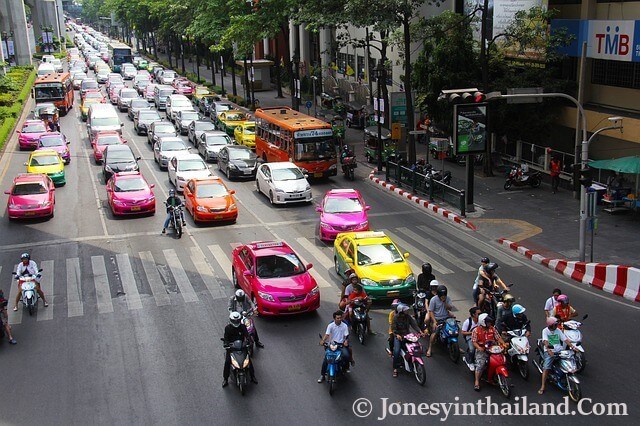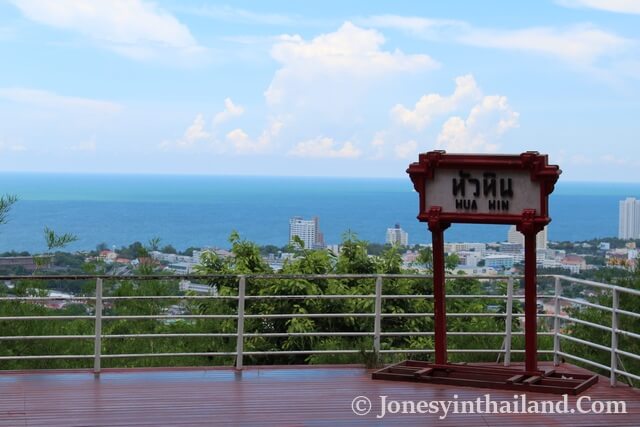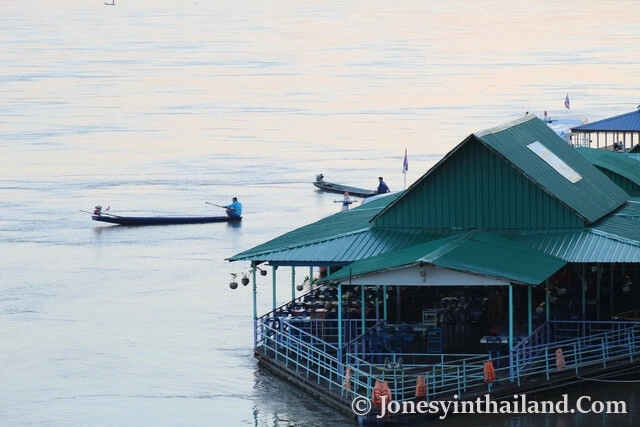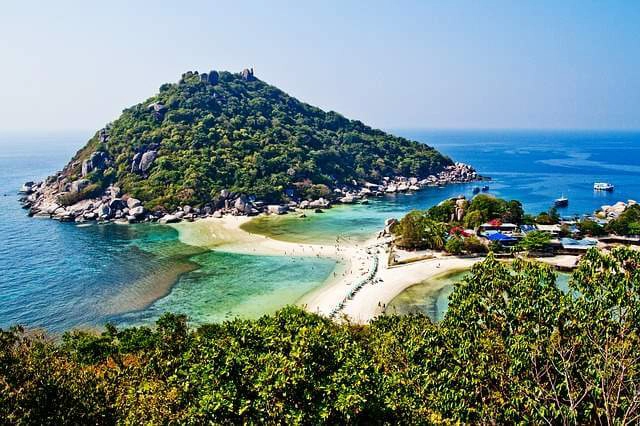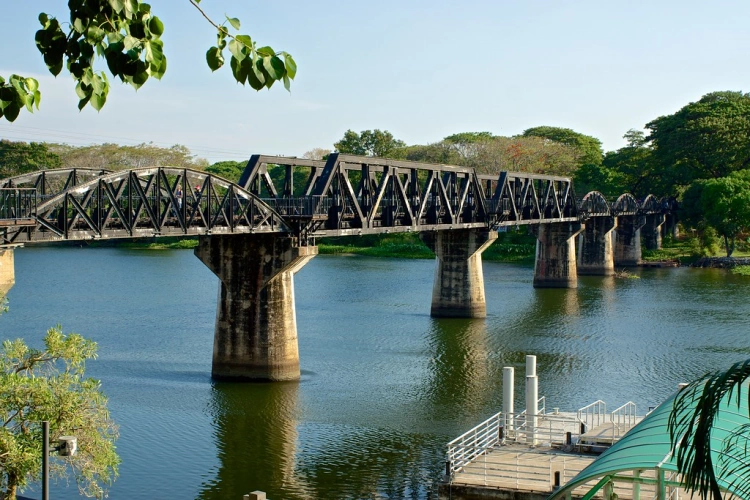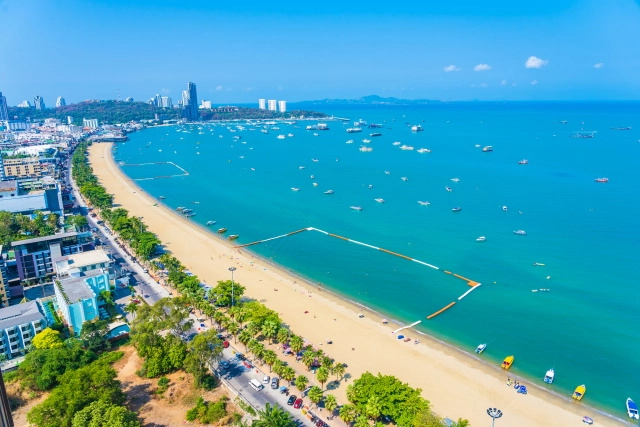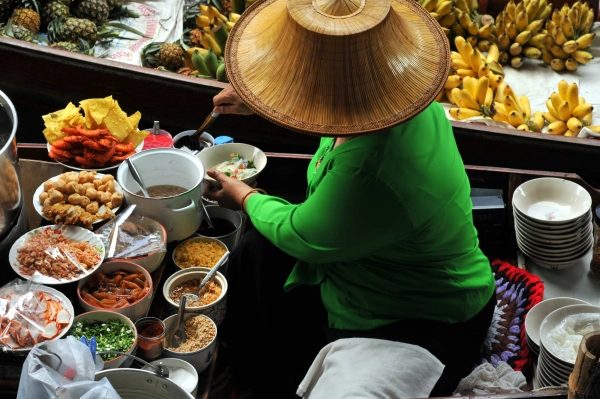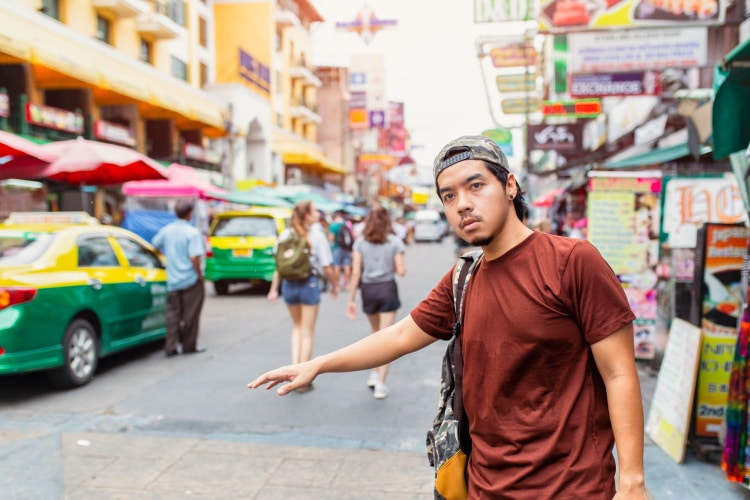Thailand Beer Guide–Which Beers Are Available?
-- Last Updated on January 23, 2023 by Jonesy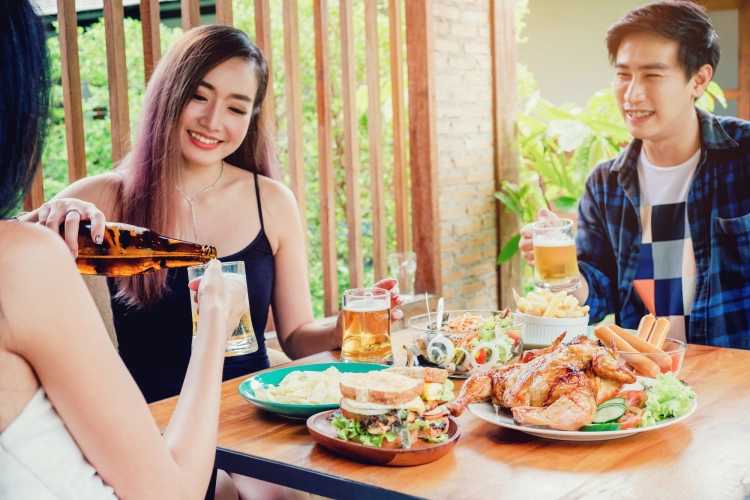
Beer first appeared in Thailand in the early 1930s, courtesy of visitors from European shores. It soon became a popular alternative to some of the local alcoholic beverages on offer, with the Thais starting to brew their own versions and brands of ‘beer’ not long after.
The term ‘beer’ is used rather generically in Thailand though, and largely refers to what Europeans might tend to consider ‘lager.’ The Thai market is typically dominated by three major companies and their respective brands of beer, which account for the top 3 best-sellers in the country. They are, namely:
- The Boon Rawd Brewery Company–one of the giants of the Thai brewing industry, holding around 70% of the market share
- Thai Beverage holds around 25%
- Thai Asia Pacific has the remainder
Although these big players and the staples they produce have long dominated the Thai beer market, more imported options have slowly been appearing over the years. On top of that are the growing numbers of locally-brewed craft beers which continue to gain popularity in Thailand. Let’s take a closer look.
The Popular Thai Beers
Typically there are just 3 locally-brewed brands out of more than 20 that constitute the majority of the Thai beer market share (the first 3 in our list), with 2 of them produced by the same company.
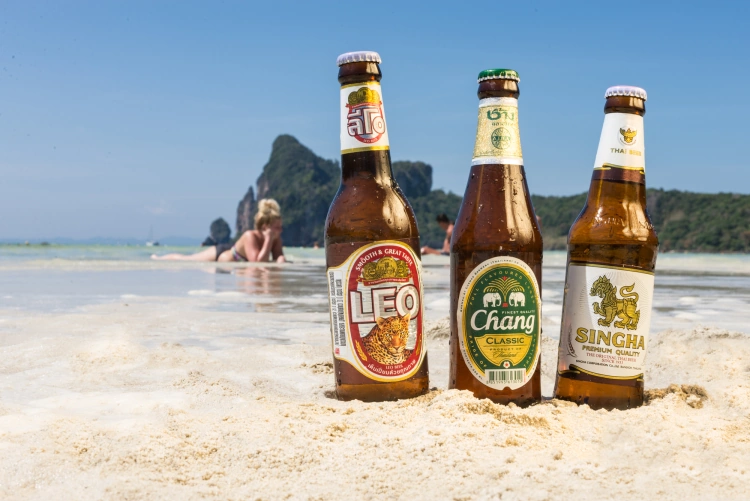
Local Thai beers tend to be cheaper than international brands as you might expect, and they generally cost between 35 and 45 baht (around $1.00) for a small/standard bottle or can of 330 ml, around 60 to 80 baht for 550-600 ml.
Leo–the Best-Selling Thai Beer
Leo Beer is Thailand’s best-selling beer, and is brewed by Boon Rawd. There are a couple of good reasons for this beer’s popularity, but one of the main ones in the past was that many drinkers wanted to steer clear of the notoriously strong Chang beer (which has now undergone a few modifications).
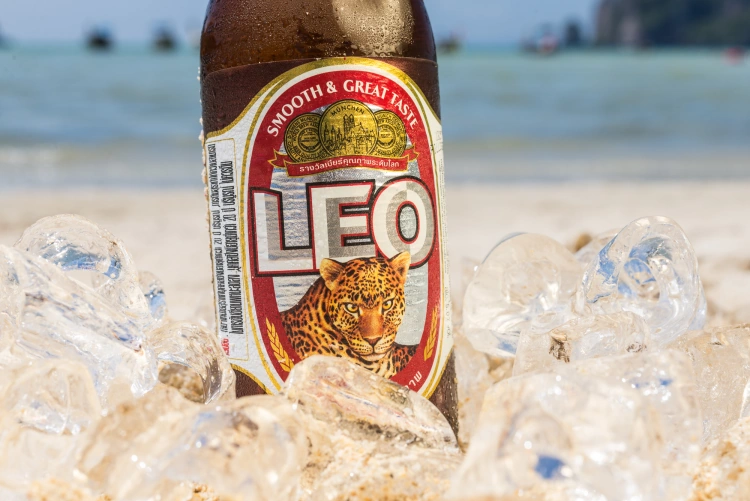
Then there were those who didn’t take to the taste of Singha (and still don’t), while others still shunned the slightly more upmarket (but still locally-brewed) Heineken as too expensive long-term. So Leo became the ‘middle’ beer in Thailand–not too strong (though not too weak) and not too expensive.
Leo’s other qualities are:
- A lightly sweet and grainy taste
- Considered by locals to be more ‘drinkable’ than the other brands
- A smooth, palatable flavour that comes from a combination of Thai rice, Australian spring barley, imported German hops, and artesian water used in the brewing process
- An ABV of Leo is 5%
Prices of Leo may vary slightly in bars and restaurants depending on the type of restaurant and the area it is in, but Thai beers don’t tend to vary that much in price as every drinker is familiar with their ‘7-Eleven price’. A large bottle of Leo will retail somewhere around 75-80 baht ($2.50), and a small can is just over half of that from convenience stores
Singha–the First Thai Beer
Singha–otherwise knowna as ‘beer Sing’–is another top Thai beer named after a powerful mythical creature. ‘Sing’ is the root word for lion in Thai (singto), although in this case it relates more to the ancient mythical creature seen on the bottle or can (singha).
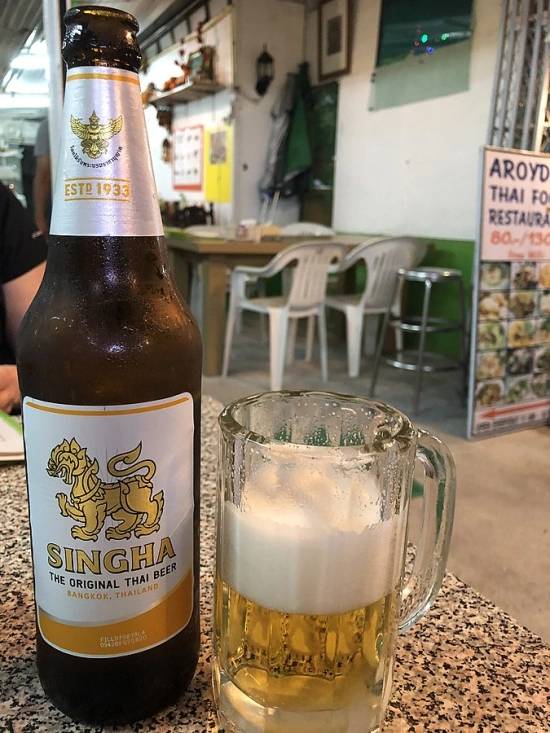
Singha is also brewed by Boon Rawd and was the first beer produced in the country. Although this top Thai beer is not everyone’s first choice, it seems those aligned with this long-standing brand consider the following qualities:
- A cleaner, crisper taste than the other available options
- A pale lager with ( a fairly standard) ABV of 5% (which has never really changed or been altered)
- Reputation and possibly slightly higher quality tend to place it above competitor brands
- Singha is just a tad more expensive than the standard competition
A large bottle at 7-Eleven prices is likely to be edging more towards the 80-baht mark these days, just to give some idea of the difference in price. Small cans are just over half of that, so you always get more ‘bang for your buck’ with the bigger bottles.
Chang–the Elephant Beer
The keen-eyed will probably note that most Thai beers are named after some kind of large or powerful animal, mythical or otherwise. This might be because they are aimed largely at the male population in the country.
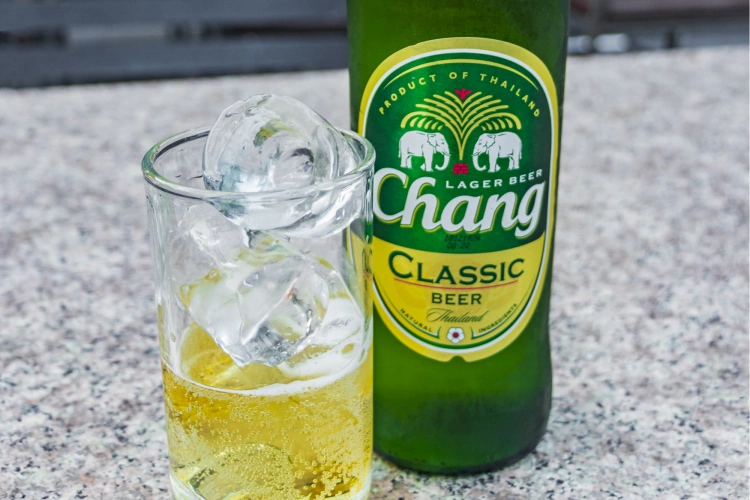
Chang beer is no different, with ‘chang’ being the Thai word for elephant, and possibly signifying this ‘huge’ beer among beers. Produced by the country’s second-largest brewery company, ThaiBev, Chang typically retains a price just lower than its 2 main competitors Leo and Singha.
This has krept up in recent years as the beer stakes its claim as a quality, drinkable standard among Thai beers. Chang was traditionally always known as the budget Thai beer with an extra ‘kick.’
It was formerly of a volume reportedly anywhere between the 6.4% listed on the bottle and 10% due to the slackness of quality control). This made it immensely popular with a particular kind of clientele (notably labourers in Thailand) which gave the beer something of a ‘lo-so’ status among locals.
However, all things must change and Chang has undergone a serious revamp in recent years. This has had quite a bit to do with football sponsorship and massive advertising campaigns, as well as stricter quality control measures which in fact led to Chang changing its formula in 2015 to meet more reliable and acceptable quality standards.
A few other Chang attributes include:
- Variations on the brand such as Chang Light, Chang Draught, and Chang Export. Eventually all of the offshoots were consolidated into what is now known as Chang Classic
- Made with 100% malt barley, and rice also forms part of the recipe to give the beer its special taste. The upgrade produced a smoother, more reliable taste and strength of 5% ABV or less (much to the chagrin of many former die-hard Chang aficionados)
The changes Beer Chang implemented managed to make it the second biggest seller after Leo. It remains a firm favourite among a section of locals (mainly football fans these days) and is a common sight in any bar, restaurant, or convenience store in Thailand.
Archa
This time with a horse as its main emblem, Archa is also brewed by ThaiBev and was traditionally in the cheap-and-cheerful yet reasonably potent bracket among locals since its introduction in 2005. That said the ABV was reduced back in 2014 to a milder 5%, perhaps in line with a new direction.
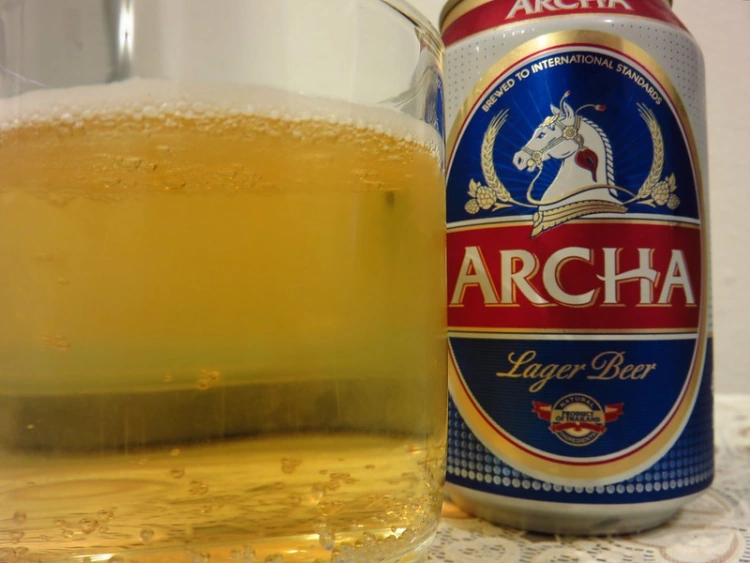
The accompanying advertising blurb often Archa as ‘a response to the demands from a new generation of beer drinkers preferring smooth beer with a lower alcohol content’. That may be debatable but this Thai beer is one of the standards on offer in any 7-Eleven or other convenience store, and it comes in a slightly lower bracket of price than most of the others.
Phuket Beer
Apparently accounting for 2% of the Thai beer market, Phuket Beer is worthy of being included on this list if only as a more exotic-sounding alternative to some of the others.
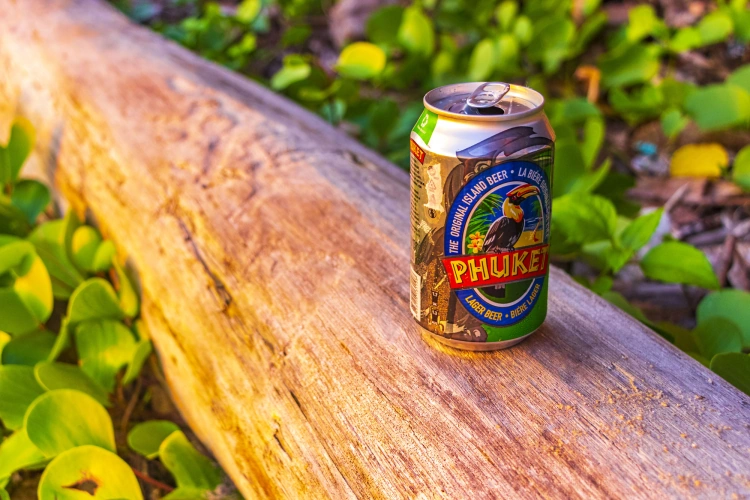
Phuket Beer was one of the first to highlight the region in its name, and its claim to fame has largely been from the fact that it is brewed from a combination of German hops and high-quality Thai Jasmine rice.
Seemingly it was this combination that made it one of the first Thai beer Gold Medal winners, making it a favourite among expats with its European aroma and malty tang.
The alcohol content is the 5 % typical of most Thai beers, and the producer is the San Miguel Thailand Brewery. A Phuket Beer will generally set you back around the same price as the other locally-produced beers, perhaps just over the standard, and it is available at selected convenience stores, bars, and restaurants across the country.
Cheers Beer
Another TOP brand launched in 2005, Cheers is another beer trying to come across as of a slightly higher quality than typical local brands, yet maintaining a reasonable and affordable price.
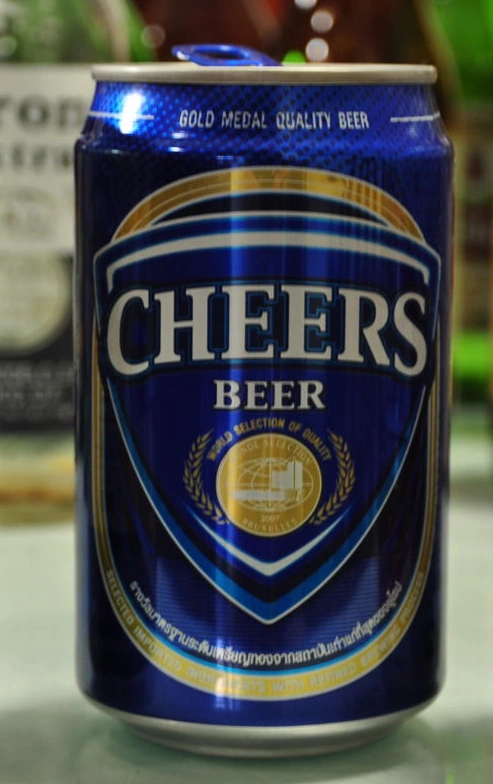
Whether the brand achieves this or not is somewhat debatable, although it has been a steady seller since its launch. It tends to be favoured by any locals looking to be slightly more adventurous than normal.
The company also added another, much stronger variation by way of Cheers X-Tra at 6.5% a few years later. Both of these beers, in their sparse but recognisable respective blue and red cans, are easily found in any 7-Eleven somewhere near the other favourites, at just a few baht more than the ‘standards’.
Popular International Beers Available in Thailand
Preferences for expensive imported beers have been displayed by younger and more upwardly-mobile generations of Thais for a while now. Trendy (real) beer bars have sprung up in some areas in recent years and the knock-on effect of this can be seen through the ever-broadening range of available imported beers.
There is also a gamut of international brands that are locally-produced under licence, and this is the first main distinction that needs to be made when thinking outside of the standard ‘local’ beers. These beers tend to be the ‘affordable’ international brands like Heineken, San Miguel, Heineken, Asahi, and more recently Budweiser that are widely available.
These names are typically around 10 baht more per can than the main Thai names (and made by at least one of the main 3 breweries). Other brands may be imported from time to time and then bottled in the country, again at one of the monopolising main breweries.
Then you have the imported names that are exactly that (although some may be brewed in nearby SE Asian countries like Malaysia or Singapore in some cases). These tend to be the real pricey brews in Thailand and are largely sold on tap for around two or three times the price or more of regular local brews.
Thus you don’t tend to find that many Guinness drinkers in Thailand.
The Locally-Brewed ‘International’ Brands
Heineken–the ‘Hi-So’ Beer
At one point the well-known Dutch beer was the most popular imported beer in Thailand. With this in mind the Asia Pacific Brewery (the third biggest in Thailand ) began brewing and marketing Heineken in 1995.
Heineken is a firm favourite in Thailand, with most drinkers believing it to have superior taste and quality to other local beers due to its European heritage. This is reflected in the price of course, but as it is locally-produced it remains within the limits of affordability for many.
The price difference of around 10 baht between Heineken and the other local options may not seem that vast, but it is considered enough of a margin to put the brand in more of a ‘middle-class drinker’ bracket for many locals.
Federbräu Beer–the ‘German’ Beer
Federbrau is a locally-produced German brand. Thais typically equate higher quality with European beers. Thus they generally believe that any beer with even a hint of German (like in the name) has got to be good.
Certainly as with Heineken to some degree the flavour of Federbräu beer may be considered to be of a better quality or more ‘authentic’ than local brands, which is again reflected in the higher price. Yet the ‘German’ flavour of the locally-brewed beer might be disputed by visitors who are more likely to notice that like the other local brands and in keeping with local preferences it is much too sweet to be anything close to a true German brew.
San Miguel–the ‘Spanish’ Beer
San Miguel Beer Ltd was established in Thailand in 2004 with the intention once again of producing high-quality beer by way of San Miguel Pale Pilsen and San Miguel Light Beer.
That said it is a staple in the local convenience stores, supermarkets, bars and restaurants, although connoisseurs may come to the conclusion that it does taste remarkably like most of the other locally-brewed beers on the shelf at about the same price, just over that of the 3 main local brands.
Tiger
Tiger originated in Singapore but is now brewed under licence in Thailand by the TAP Brewery. It has the ‘standard’ ABV of 5% although a lighter version of just 2% is also brewed and offered in Thailand.
The flavour is meant to be robust and full-bodied, which is perhaps something that grows on you over time as the beverage seems like more of a pale lager. Tiger is priced similarly to the other local beers, albeit just slightly higher.
Asahi (Super Dry)–the ‘Japanese’ Beer
One of Japan’s top breweries Asahi entered into a joint venture with Boon Rawd Brewery to produce and sell its best-selling ”Super Dry” brand in Thailand.
It is available on the shelves of pretty much every convenience store as well as most bars and restaurants as something of a ‘poor man’s Japanese beer’. Some might disagree but it tastes little like either a dry beer or a Japanese one, and retails at a similar price to the other locally-brewed ‘international’ brands.
Kloster Beer
Kloster is a pale ale brewed by Boon Rawd Brewery under licence from the German brewery. The beer is possibly one of the closest to a German beer in that German brewing techniques are used to produce the golden yellow brew with a fizzy white head and a bittersweet and fruity aftertaste.
It is closer than Federbrau at least, but quite a bit less widely-available and is usually found in city-centre restaurants and bars.
Real International Brands
Many of these brands are typically only available on draught in the trendy and expensive beer bars like H.O.Bs (House of Beers) in and around the central city areas.
Others you’ll find in slightly less-exclusive pubs and bars in and around the city, but none of these are considered ‘standard’ in Thailand. You might find bottled or canned varieties in convenience stores in some areas (at 3 times the price of the others) but they are largely confined to bars and restaurants in the city due to demand.
Supermarkets like Villa tend to have more of these as does Tops Supermarket. In fact even Tesco Lotus has started featuring more of these brands, but they are still a long way from being the ‘norm,’and the price is an indication of the difference between these beers and the locally-produced international names.
- Carlsberg
- Hoegaarden
- Stella Artois
- Paulaner
- Leffe Blonde
- Erdinger
- Carlsberg
- Beer Laos
- Kirin
- Fosters
- Budweiser
- Sapporo
- Stella Artois
- Guinness
Note: the Guinness that’s available in Thailand is brewed by Heineken Malaysia and imported. You didn’t really think the velvet stout would travel all the way from Ireland did you? Not a chance–even when it’s selling for 250-300 baht per (quickly pulled) pint! Thus you’ll only find pints of it in over-priced city-centre pubs.
Craft Beer in Thailand
Trendy and innovative craft beer producers have been trying to show their hand for a while now. But this has been no easy task due to Thai brewing laws which were drafted to require production of not less than 10 million litres in a bid to outlaw moonshining and also limit the ABV.
The craft beers are typically available in small and trendy city-centre bars although many of the new brands are even finding their way into local 7-Elevens. This has largely been a good thing in that it has helped broaden the otherwise painfully limited beer options.
According to THIS REPORT Thai craft beer sales increased by 40-50% in 2020. The growth of this segment of the Thai beer market has something to do with the continuation of ever-expanding consumer requirements.
The Bottom Line
The good news for any beer-lovers planning a trip to Thailand is that in some shape or form the amber nectar is plentiful. If you are a die-hard beer-wise you may need to be a bit more open-minded and adaptable than usual in order to get the most out of your holiday, but there is no shortage of options in the quest to find a decent beer in Thailand.
Not only that but you’ll also encounter different scenarios and styles when it comes to the actual partaking of beer, and the climate changes any usual perceptions. The bottom line is that beer is plentiful and cheap in Thailand, and the weather is warm–what more could a beer-lover ask for?

Mark Philip is a writer and lifestyle enthusiast from the Midlands in the U.K. With a background in martial arts and fitness, Mark upped sticks and headed out to Bangkok to delve a bit deeper into the art of Thai Boxing way back in the 2000s, starting to write initially to fund his daily training and escape the rigours of ESL teaching. Since then Mark has authored e-books, articles, and blogs across a wide range of topics for commercial, educational, factual, health & fitness, lifestyle, wellness, and leisure-based purposes.

